A thermodynamic system undergoes cyclic process ABCDA as shown in figure. The work done by the system is
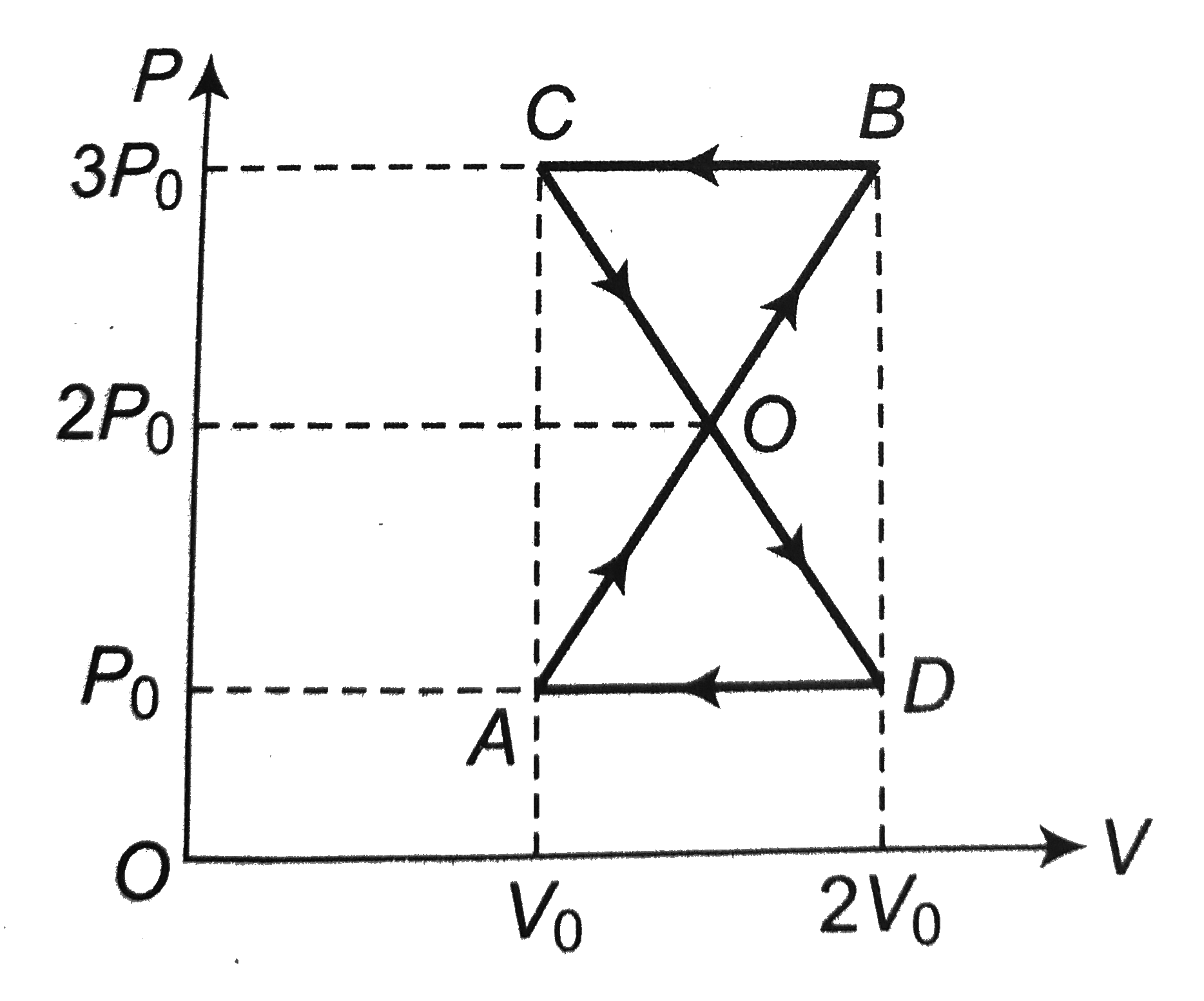
P0V0
2P0V0
P0V02
zero
The correct Answer is:D
WBCOB=−Area of triangleBCO=+P0V02
WAODA=+Area of triangleAOD=+P0V02
∴Wnet=0.
Topper's Solved these Questions
Similar Questions
A thermodynamic system undergoes a cyclic process as shown in figure. The cycle consists of two closed loops, loop I and loop II. (a) Over one complete cycle, does the system do positive or negative work? (b) In each of loops I and II, is the net work done by the system positive or negative? (c) Over one complete cycle, does heat flow into or out of the system? (d) In each of loops I and II, does heat flow into or out of the system?
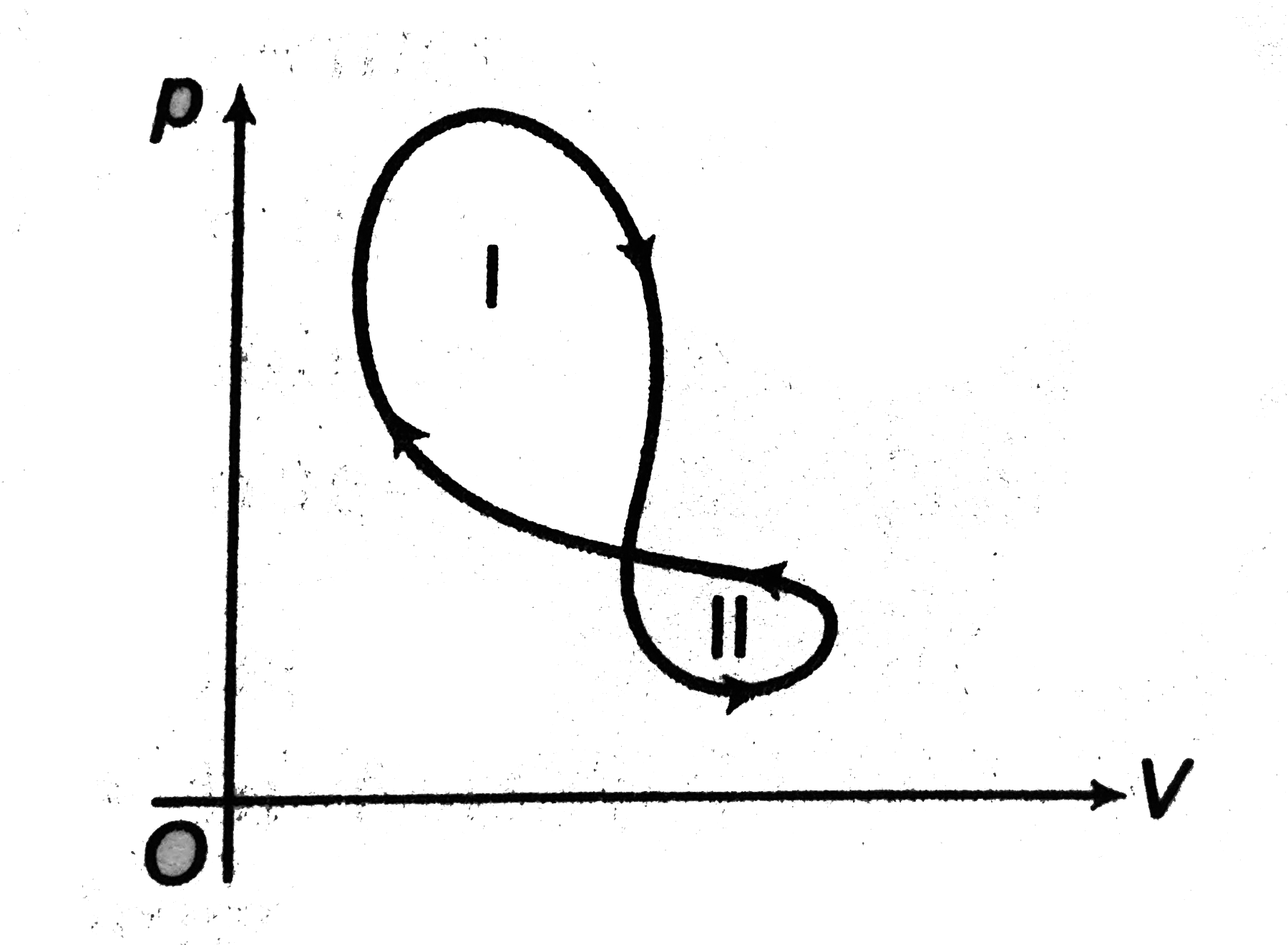
View SolutionA thermodynamic system is taken through the cyclic PORSP process (see figure). The net work done by the system is

View Solution
Knowledge Check
A thermodynamic system undergoes cyclic process ABCDA as shown in figure. The work done by the system in the cycle is
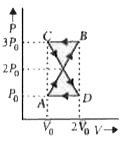 AP0V0B2P0V0CP0V02Dzero
AP0V0B2P0V0CP0V02DzeroA thermodynamical system undergoes cyclic process ABCDA as shown in figure work done by the system is
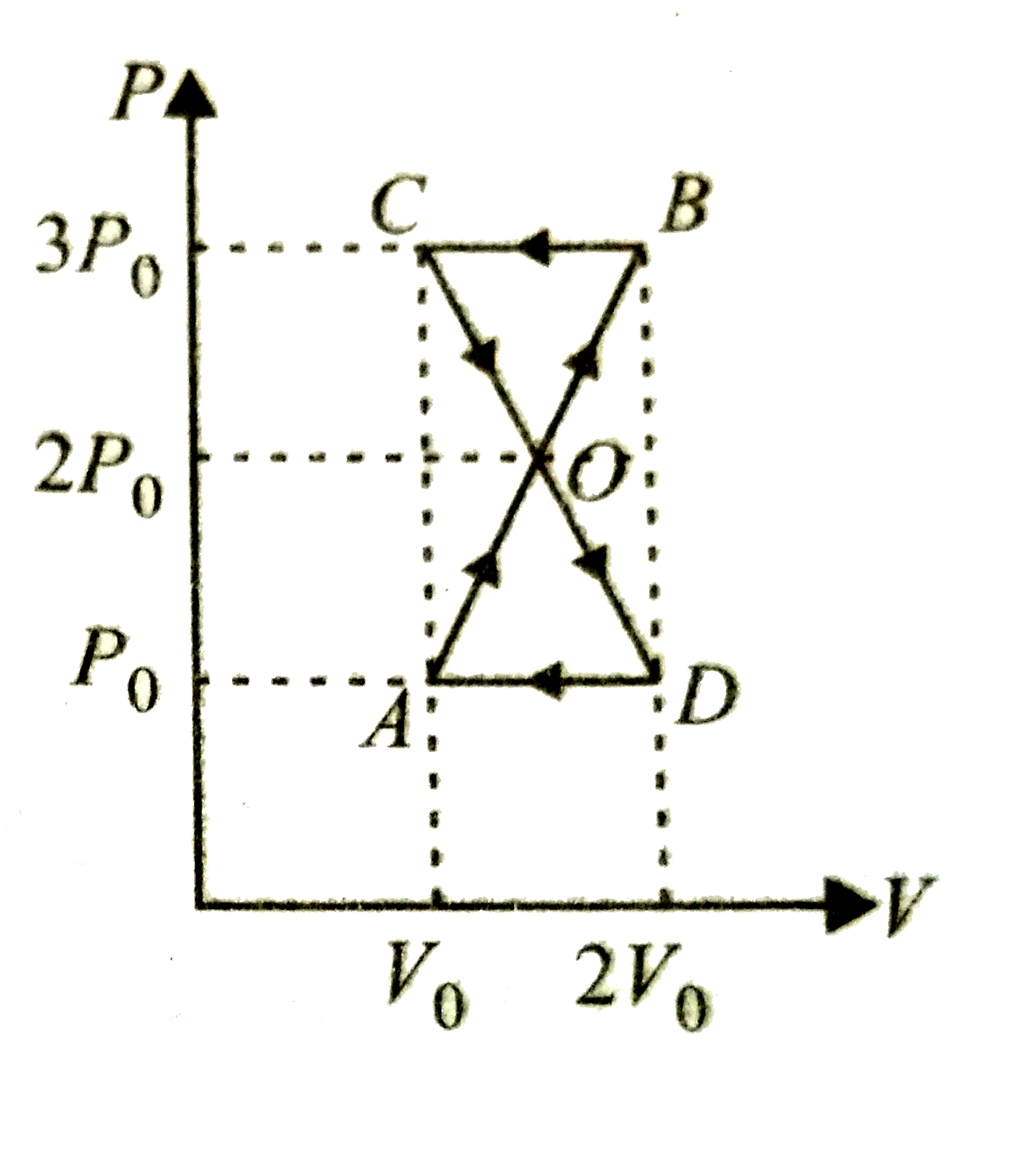 AzeroB2P0V0CP0V0D32P0V0
AzeroB2P0V0CP0V0D32P0V0A thermodynamic process undergoes a cyclic process ABCDEBFGA as shown in the figure. Find the quantity of heat supplied to the system over one complete cycle.
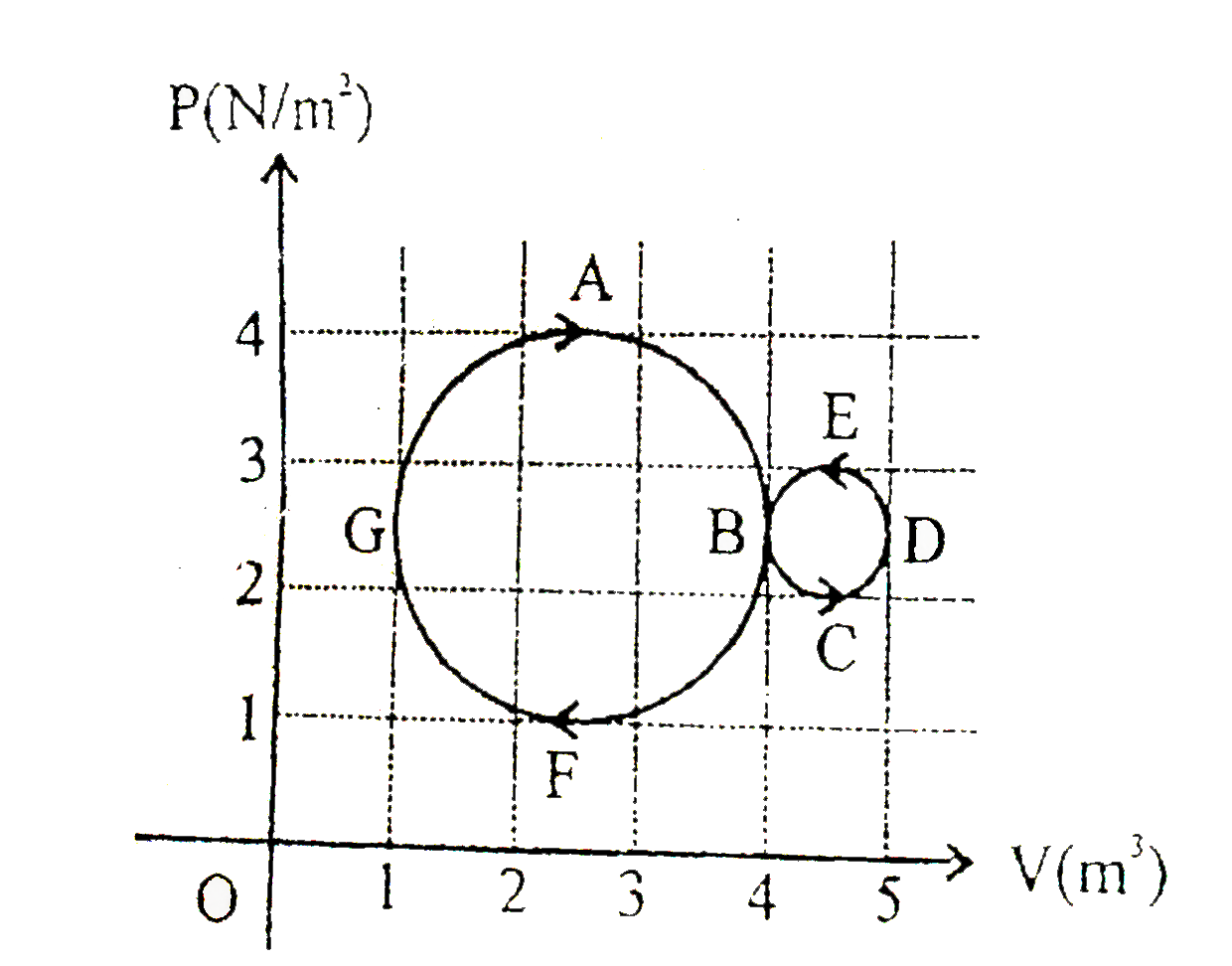 Aπ4B3π2C2πD5π2
Aπ4B3π2C2πD5π2
The P - V diagram of a system undergoing thermodynamic changes is as shown in the figure. The work done by the system in going from A→B→C is 30 J. If 68 J of heat is given to the system, then the change in the internal energy of the system between A and C is

View SolutionAn ideal gas undergoes cyclic process ABCDA as shown in givend p−V diagram. The amount of work done by the gas is
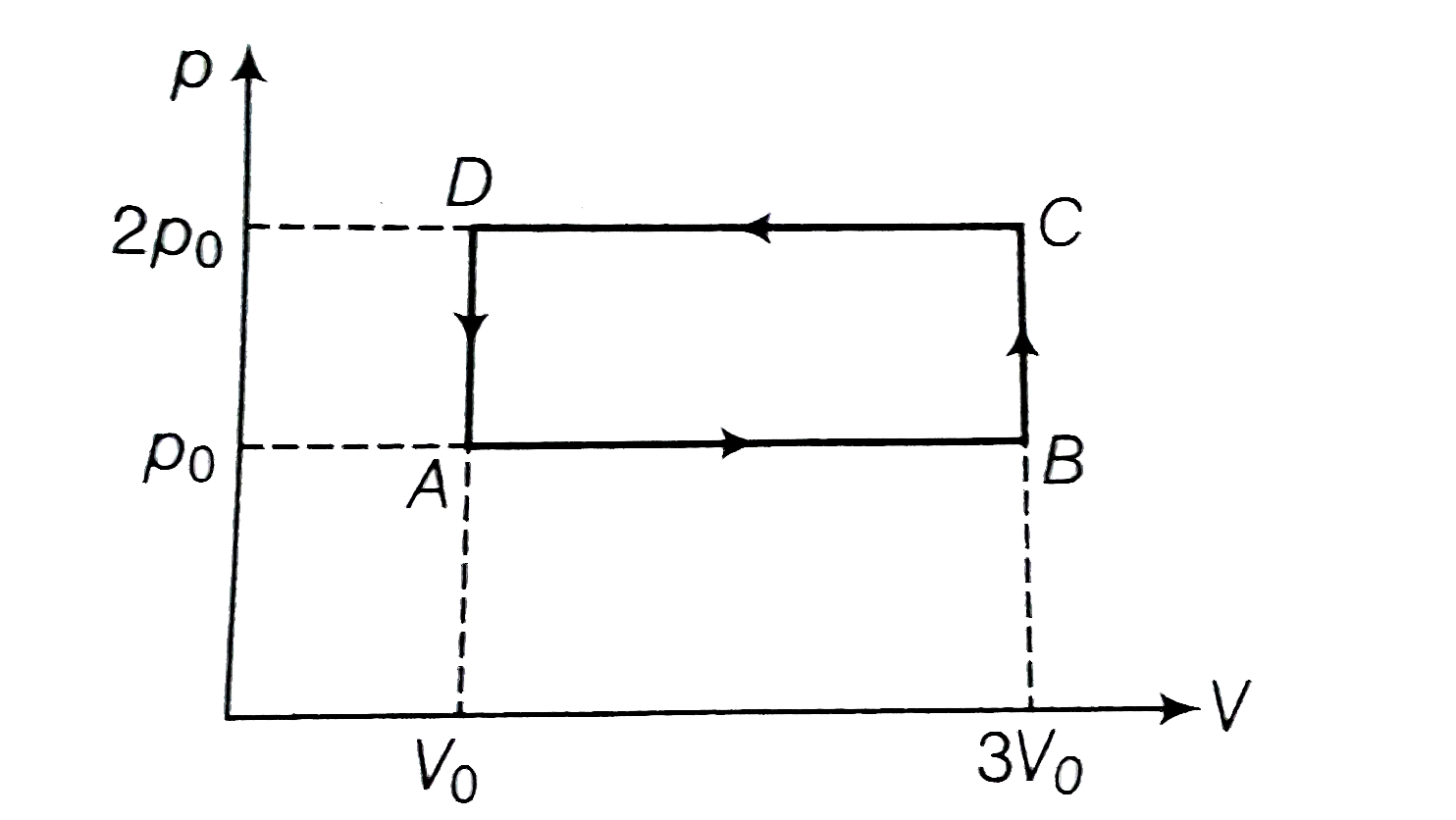
View SolutionIn the cyclic process shown in the figure, the work done by the gas in one cycle is
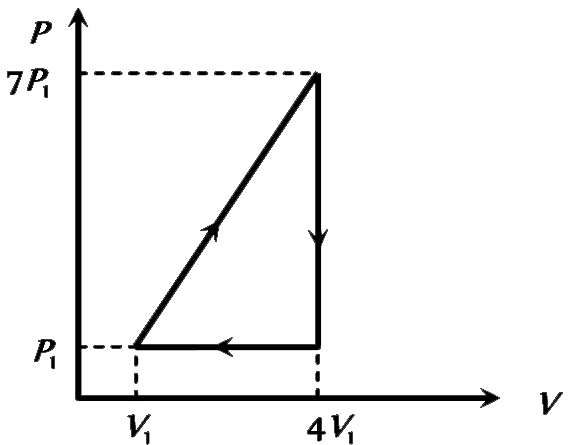
View SolutionOne mole of an ideal gas undergoes a cyclic process ABCDA as shown in the P-V diagram, The net work done in the process is
(1atm=106 dyne cm−2)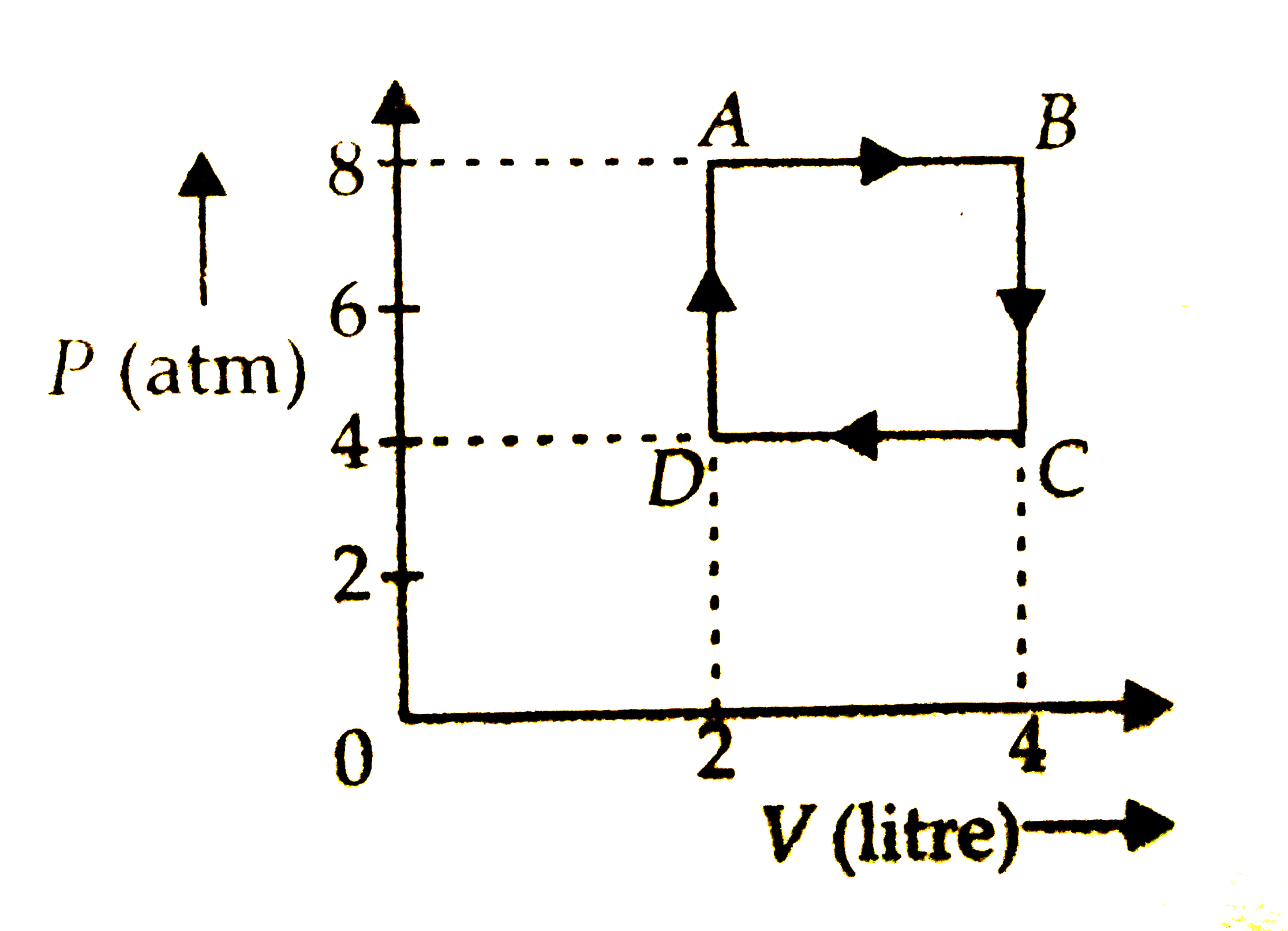
View SolutionAn ideal monoatomic gas undergoes a cyclic process ABCA as shown in the figure. The ratio of heat absorbed during AB to the work done on the gas during BC id
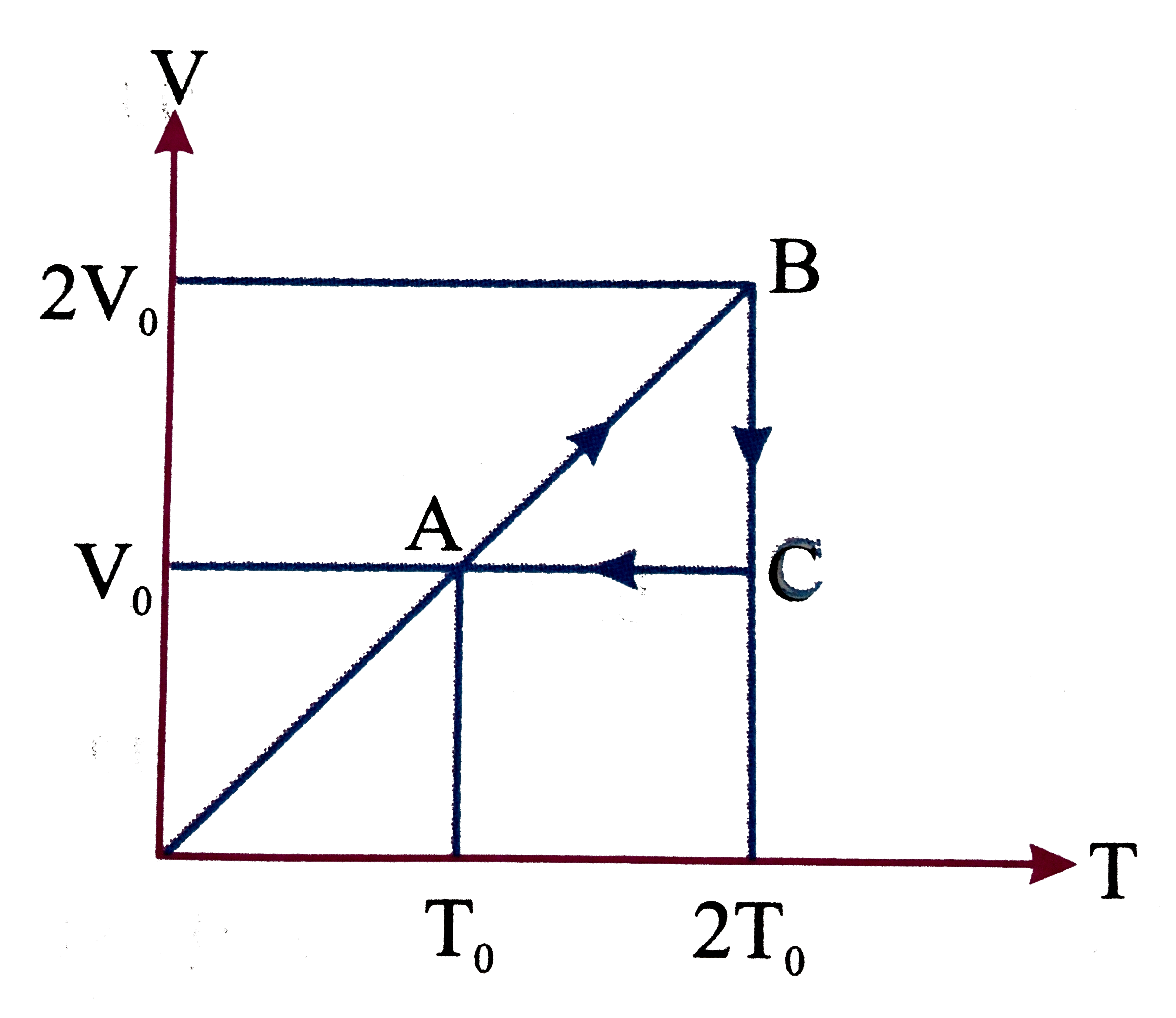
View Solution
